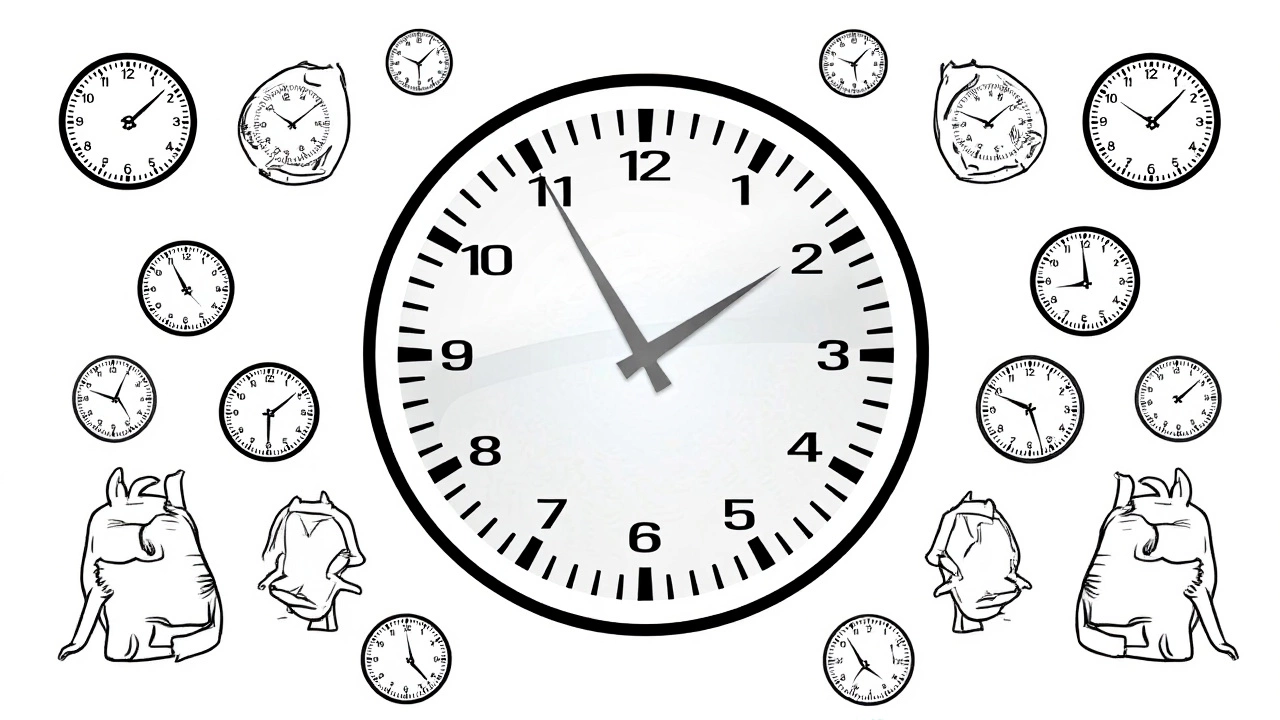
At 2:00 a.m. on Sunday, October 26 2025, the Isle of Man will set its clocks back one hour, officially ending 2025 Autumn Clock ChangeIsle of Man and returning to Greenwich Mean Time (GMT). The shift, announced early Saturday by Manx Radio, gives residents an extra hour of sleep but means evenings will darken sooner while mornings stay brighter.
Why the Island Follows the Same Schedule as the UK
Even though the Isle of Man is a self‑governing Crown dependency, its time‑keeping has been aligned with the United Kingdom since the early 20th century. The British Parliament’s Daylight Saving Act of 1916 set the precedent, and the island simply mirrors the UK's statutory clock changes to avoid cross‑border confusion for commuters, airlines, and digital services.
Geographically, the island sits at roughly 54° 14′ N, 4° 31′ W—latitudes that experience a noticeable swing in daylight between summer and winter. That makes a one‑hour shift a practical way to “make better use of daylight,” as the Wikipedia definition of daylight‑saving time explains.
What Happens at 2 a.m.? The Technical Details
When the clock strikes 2:00 a.m., the digital display will jump back to 1:00 a.m. In practice, this means the hour from 1:00 a.m. to 2:00 a.m. repeats once. Most electronic devices update automatically, but older mechanical clocks need a manual turn of the hour hand.
- Current time zone before the change: British Summer Time (BST), UTC+01:00
- New time zone after the change: Greenwich Mean Time (GMT), UTC+00:00
- Next forward shift: 1:00 a.m. on Sunday, March 28 2026
- Typical impact: lighter mornings, darker evenings
The RAC Drive Consumer Editor highlighted that the 2025 spring forward occurred on March 30 at 1:00 a.m., shaving an hour off that night. The autumn rollback mirrors that timing, aiming to minimize disruption during the weekend.

Community Reactions: From Sleep‑Lovers to Night‑Shift Workers
Local radio host on 3FM Isle of Man reminded listeners at 5:55 p.m. on Saturday not to forget “putting your clocks back tonight.” Many families greeted the news with a grin, noting the chance for an extra hour of shut‑eye before the winter rush.
Conversely, night‑shift employees at the Douglas General Hospital expressed a mild inconvenience. Nurse Sarah Whitaker told RAC Drive that the shift change will require a quick adjustment to medication schedules, but she added, “We’re used to it; we just set an alarm.”
Retailers, especially those near the island’s ferry terminals, anticipate a brief surge in foot traffic as commuters double‑check their watches before boarding the late‑evening services.
Impact on Daily Life, Business, and Technology
For most residents, the immediate effect is a feeling of “borrowed” sleep. A study by the Isle of Man Government’s Transport Department showed that, on average, people report a 5‑minute improvement in perceived alertness after the autumn shift.
Transport timetables, including the iconic steam‑engine‑run Isle of Man Steam Railway, are pre‑adjusted by the national scheduling software. The same goes for digital calendars; services like Google Calendar and Outlook automatically apply the GMT offset for the island.
However, analog clock collectors and heritage societies stress that the “turning back of time” is a reminder of the island’s maritime heritage, where time was once set by the position of the sun and the tide.

Looking Ahead: The Next Clock Change and Long‑Term Debates
After the October rollback, the island will remain on GMT until the spring forward on March 28 2026, when clocks jump ahead at 1:00 a.m. to re‑enter BST. This schedule aligns perfectly with the UK’s “summer time” period, which runs from the last Sunday in March to the last Sunday in October.
There is an ongoing debate in the UK Parliament about scrapping daylight‑saving time altogether. If the UK were to opt for permanent GMT or permanent BST, the Isle of Man would likely follow suit, given its close economic ties and shared infrastructure. For now, though, the annual ritual remains a familiar part of island life.
Frequently Asked Questions
How will the clock change affect commuters on the Isle of Man?
Commuters will notice that mornings feel brighter, which can make the early drive to the ferry terminal easier. However, evening darkness will set in around 5:30 p.m., so those who rely on after‑work public transport may need to adjust their schedules. Most bus and ferry timetables are already updated in the system, so the change should be seamless once clocks are set.
What is the history of daylight saving time on the island?
The Isle of Man first adopted British Summer Time in 1916, following the United Kingdom’s wartime measures to conserve fuel. Since then, the island has mirrored every UK clock change, including the brief experiment with “British Standard Time” in the late 1960s. Over the decades, public opinion has oscillated, but the practice remains entrenched due to its economic convenience.
Why does the Isle of Man follow the same schedule as the United Kingdom?
The island’s economy is tightly linked to the UK’s—most trade, travel, and communications cross the Irish Sea daily. Sharing the same time zone eliminates confusion for airlines, ferry services, and digital networks. Legally, the Isle of Man’s government adopts UK legislation on timekeeping, making coordination straightforward.
When is the next clock change after October 2025?
The next adjustment will be the spring forward on Sunday, March 28 2026, at 1:00 a.m. Clocks will jump ahead to 2:00 a.m., re‑entering British Summer Time (UTC+01:00). This follows the standard UK pattern of moving clocks forward on the last Sunday in March.
Do businesses need to take any special steps for the time shift?
Most modern systems update automatically, but companies that rely on legacy hardware—like some point‑of‑sale terminals or industrial timers—should verify that they are set to GMT after the change. The Isle of Man Chamber of Commerce recommends a quick audit of critical equipment on the Saturday before the shift.